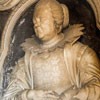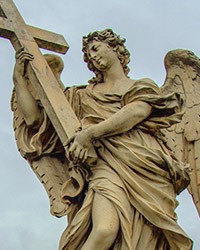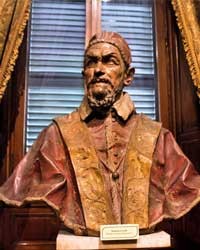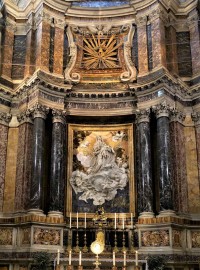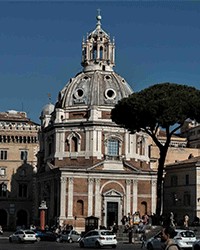Giuliano Finelli (1602–1653) – a sculptor of lace, leaves and collars, but also more
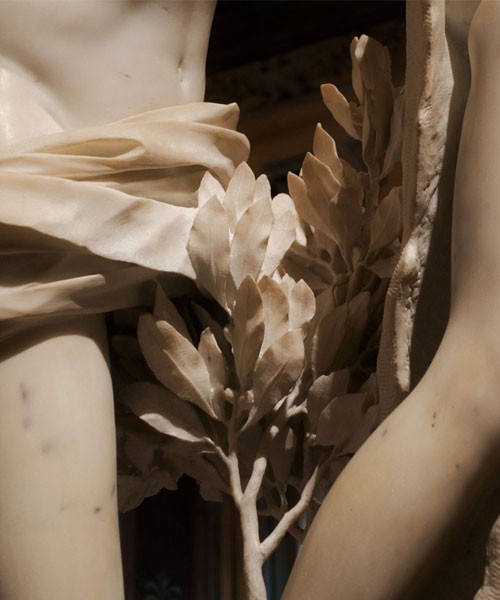
Apollo and Daphne, Gian Lorenzo Bernini, sculpting details by Giuliano Finelli, Galleria Borghese

Giuliano Finelli, tombstone of Virginia Bonanni, fragment, Church of Santa Caterina da Siena a Magnanapoli
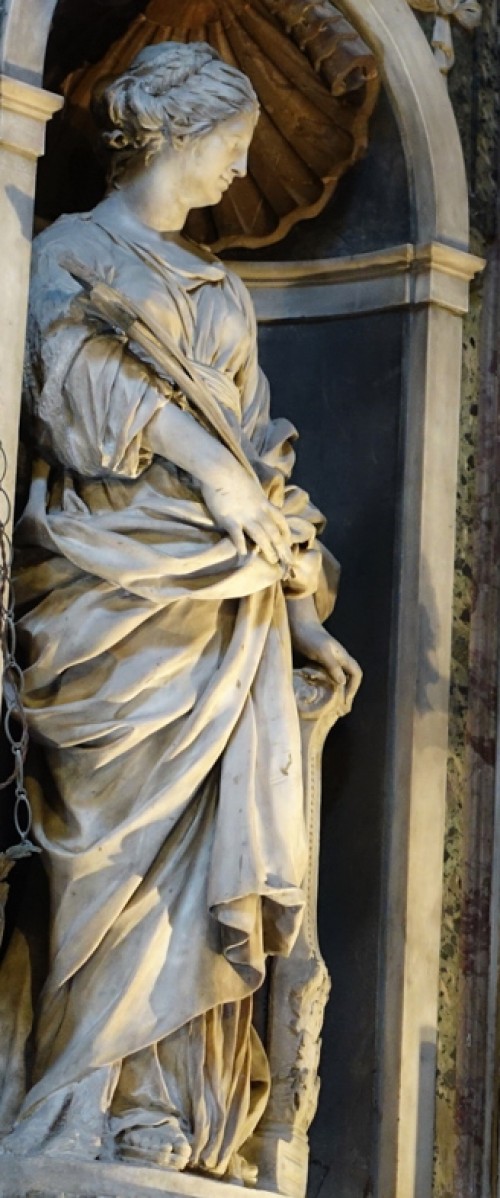
Giuliano Finelli, St. Cecilia, presbytery of the Church of Santa Maria di Loreto
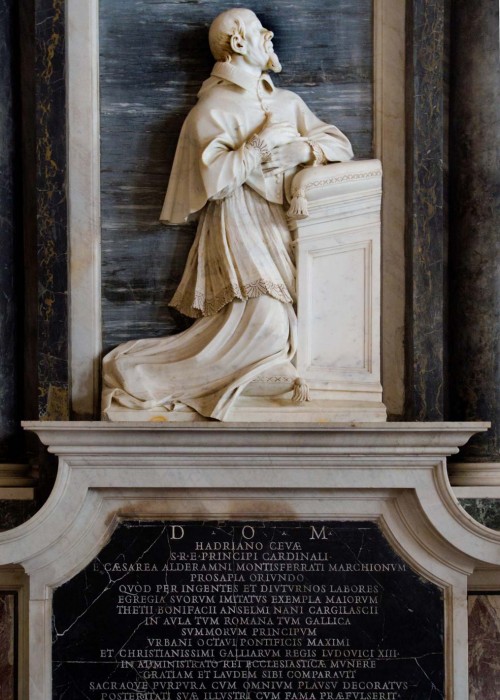
Giuliano Finelli, tombstone of Cardinal Adriano Ceva, San Giovanni Baptistery, Chapel of SS. Venantius and Domnius
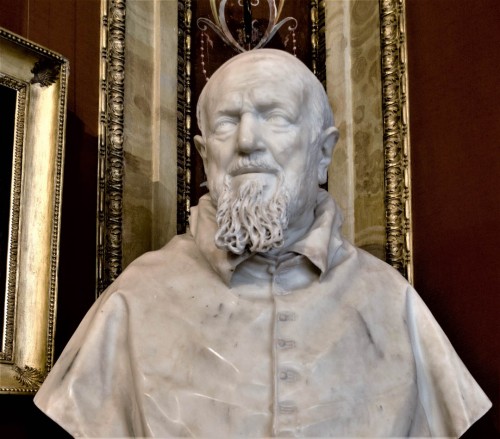
Giuliano Finelli, bust of Cardinal Domenico Ginnasi, Galleria Borghese
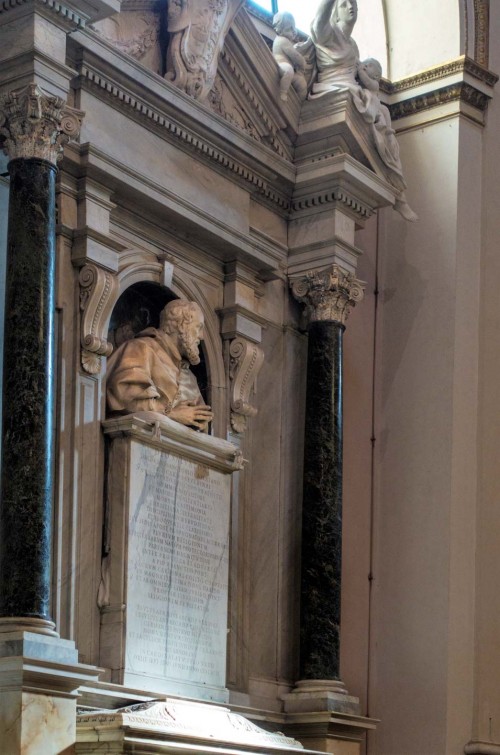
Giuliano Finelli, bust of Cardinal Giulio Santorio, Basilica of San Giovanni in Laterano
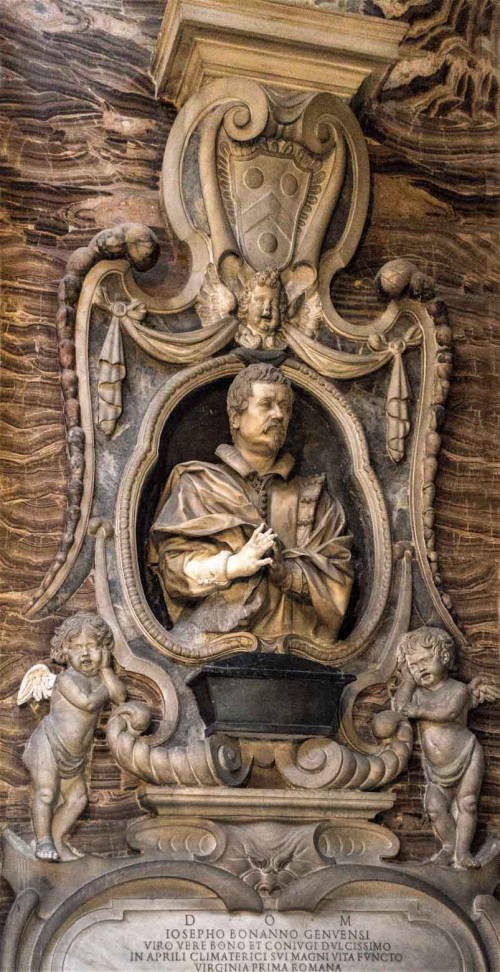
Giuliano Finelli, tombstone of Giuseppe Bonanni, Church of Santa Caterina da Siena a Magnanapoli
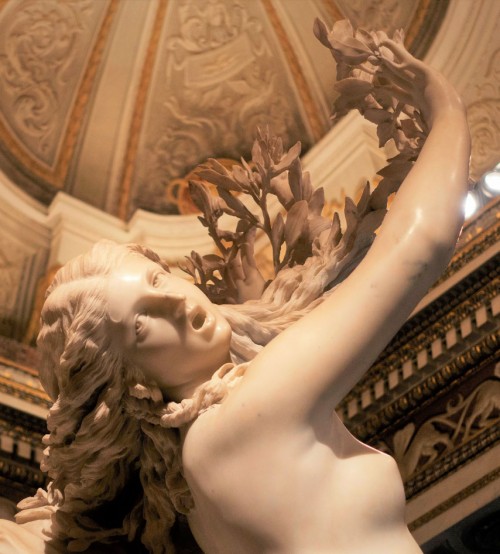
Apollo and Daphne, Gian Lorenzo Bernini, details by Giuliano Finelli, Galleria Borghese
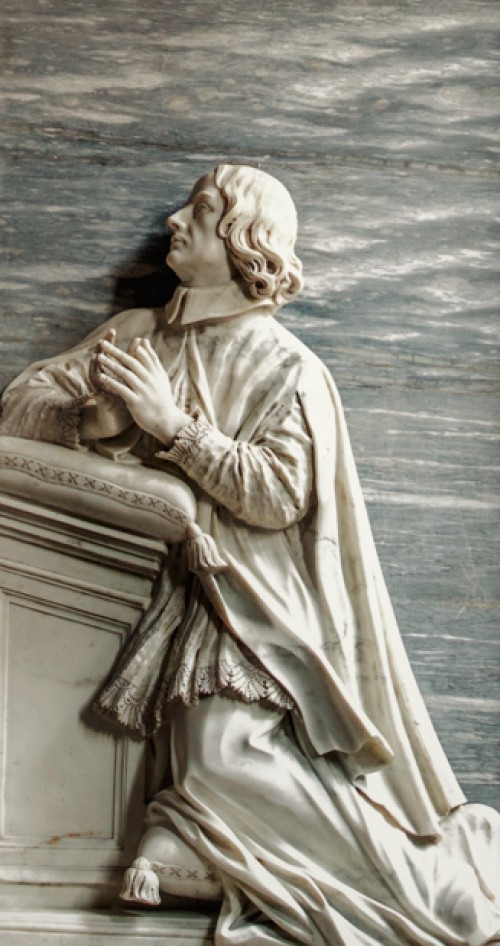
Giuliano Finelli, tombstone of Cardinal Francesco Adriano Ceva, fragment, San Giovanni Baptistery, Chapel of SS. Venantius and Domnius
His teacher and associate was initially Pietro Bernini, and later his son Gian Lorenzo Bernini. With the latter he co-created many exceptional works, including the famous group Apollo and Daphne. However, he openly criticized his master for unjust treatment, meaning favoring other apprentices and undervaluing his input into works, for which Bernini garnered all the splendor. Bernini was not a precisionist, and besides that numerous commissions did not allow him to carve lace or sand leaves in his composition and so it was this work that with inborn precision, was performed by Finelli.
His teacher and associate was initially Pietro Bernini, and later his son Gian Lorenzo Bernini. With the latter he co-created many exceptional works, including the famous group Apollo and Daphne. However, he openly criticized his master for unjust treatment, meaning favoring other apprentices and undervaluing his input into works, for which Bernini garnered all the splendor. Bernini was not a precisionist, and besides that numerous commissions did not allow him to carve lace or sand leaves in his composition and so it was this work that with inborn precision, was performed by Finelli.
Unquestionably Finelli was a precisionist, who with finesse finished off every detail, yet during his Roman period, the influence of Bernini cannot go unnoticed. However, in comparison with the creations of Bernini, in his creations there is definitely more realism and a kind of sobriety, which can be attested to by for example, the bust of Cardinal Scipione Borghese (The Metropolitan Museum of Art, New York) – seemingly similar to Bernini’s work, yet so very different.
Due to financial conflicts and wounded pride after being refused the completion of the figure of St. Helena designated for the main pillar of the Vatican Basilica the uncompromising Finelli started looking for occasional work along with another valued artist of that time – Pietro da Cortona. He proved that he was able to create a convincing monumental figure, completing the statue of St. Cecilia in the Church of Santa Maria di Loreto.

After leaving the workshop of his master in 1628, the sculptor went to Naples, where his talents were properly appreciated. He did complete a few more works for Roman clients though. He died in Rome and is buried in the Church of Santi Luca e Martina.
The most important works of Giuliano Finelli in Rome:
- Tombstone bust of Giulio Antonio Santorio (approx. 1634) in the Basilica of San Giovanni in Laterano
- Statue of St. Cecilia (1630) in the Church of Santa Maria di Loreto
- Tombstone bust of Cardinal Ottavio Bandini in the Bandini Chapel in the Church of San Silvestro al Quirinale
- Tombstone busts of Giuseppe and Virginia Bonanni in the Church of Santa Caterina a Magnanapoli
- Tombstones of two cardinals from the Ceva family, in the San Giovanni Baptistery











